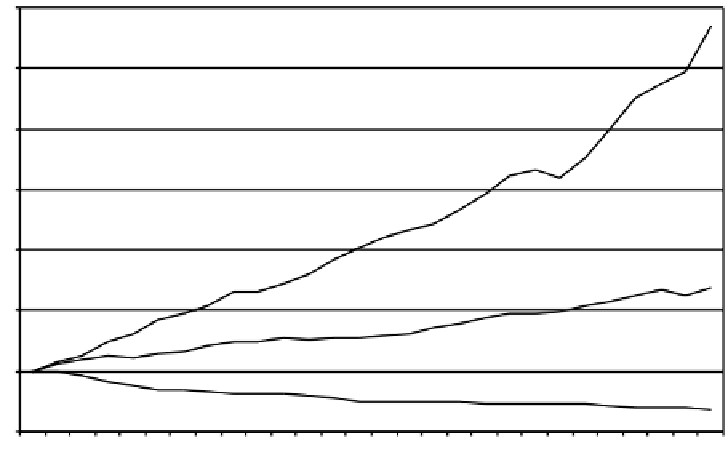Environmental Engineering Reference
In-Depth Information
Note:
Unified tonne kilometres performed (TKP) for passenger and cargo operation.
Source:
Swissair, 2000, pers comm. Even though Swissair suffered from severe financial problems during
2001, it remains a good example of an airline with outstanding operational efficiency.
Figure 11.1
Long-term relative changes in transport activity, fuel consumption and
unit fuel consumption for Swissair
Reduced air travel frequency may induce longer air travel distances to the extent that
air travel expenditures remain constant and demand concentrates on longer trips
and vice versa. Reductions in overall travel demand either through reduced trip fre-
quency or trip distance may partly sacrifice further achievements in technical and
operational efficiency. Development and take-up of more environmentally friendly
aircraft technology may be delayed and airlines may face problems in maintaining
high load factors in the short or medium run. Increases in technical and operational
efficiency that allow airlines to cut costs and, hence, ticket prices may activate latent
air travel demand. Optimized (lower) cruise altitude may give rise to higher fuel
burn and, hence, CO
2
emissions as far as this incurs increased aerodynamic drag.
With the exception of the negative effect of reduced air travel frequency on opera-
tional efficiency, which may disappear after adaptation of airlines to a decrease in the
number of passengers, the rebound effects mentioned can be expected to be lasting.
In order to keep rebound effects to a minimum, a balanced policy approach that most
effectively combines all relevant options for reducing emissions will be necessary.
A
CTORS
INFLUENCING
GHG
EMISSIONS
FROM
CIVIL
AVIATION
Generally, environmental problems arise from certain activities performed by gov-
ernments, industry and consumers, as depicted in Figure 11.2. Governments often
provide for infrastructure that encourages industry and consumers to perform activ-

















































































